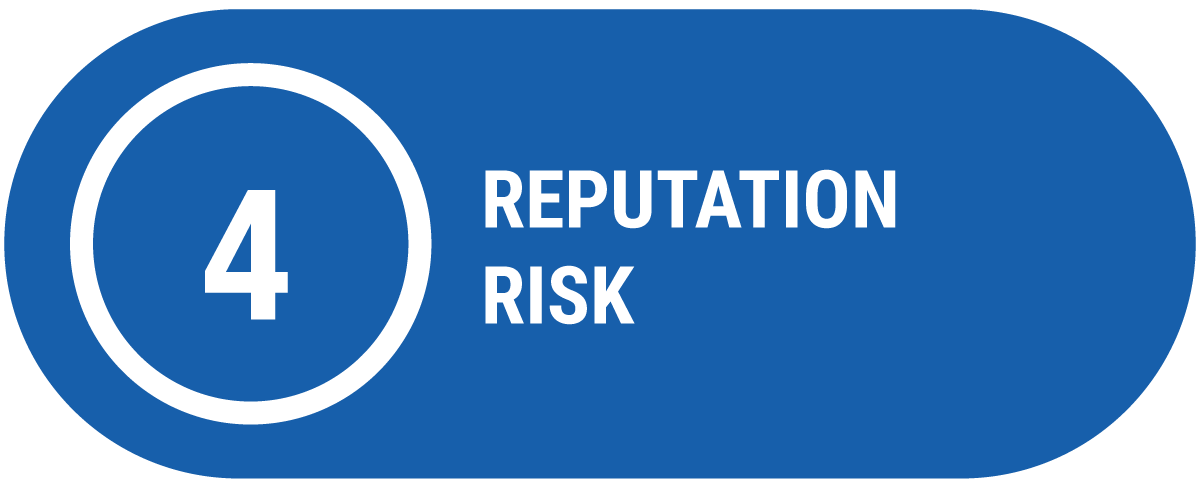Key risks in 2022/23, treatment, opportunities, trend,
and outlook
This subsequent section of the report provides a comprehensive overview of the potential risks faced by the NSSF, as well as risk analysis, mitigation strategies, and contingency planning.
Risks driven by global factors
1. MARKET RISK - FOREIGN EXCHANGE

2021/22
2022/23
Trend
Description of risk and the Fund’s response
The Fund’s FY22/23 performance was significantly affected by foreign exchange risk, due to the appreciation of the UGX against the regional currencies, especially the Kenyan shilling. NSSF invested UGX 583 billion in Kenya, where the KES/UGX exchange rate declined from 31.91 (30 June 2022) to 26.1 (30 June 2023).
The Fund is a long-term investor; hence our strategy is to respond to long-term movements driven by changes in the market fundamentals.
Opportunities
There is an opportunity to acquire assets at low prices as soon as there are indications of economic stability in Kenya.
Outlook
In the short run, the KES is expected to face challenges as the country seeks funding of USD 2bn Eurobond due June 2024.
KES is expected to recover in the medium term as the country stabilises.
Capital Impacted
Stakeholders Impacted
Material Matters
Strategic Objectives Impacted
2. Equity risk (Market risk)

2021/22
2022/23
Trend
Description of risk and the Fund’s response
The equity risk was rated high on account of volatility of the stocks, which resulted in a net unrealised loss of UGX 105.2Bn.
The equity risk management strategy is to maintain a relatively lower asset allocation to equity (12.5% - 20%) compared to fixed income (70% - 82.5%).
Opportunities
There is an opportunity to acquire stock at a cheaper price for companies whose investment fundamentals are strong.
Outlook
Uncertainty still looms over the timelines for the end of the Russia-Ukraine war, Kenya riots and terrorist activities, which implies the recovery may be slow.
The equity risk is likely to remain high on account of suspension of World Bank funding in Uganda, and political upheavals in Kenya.
Capital Impacted
Stakeholders Impacted
Material Matters
Strategic Objectives Impacted
Risks driven by local factors
3. Information and Cyber security risk

2021/22
2022/23
Trend
Description of risk and the Fund’s response
There was an increase in cyber-attacks globally and locally, which heightened the risk of cyber-attacks. Secondly, the high level of automation in the Fund increases susceptibility to cyber-attack. A cyber-attack has a potential to paralyse the entire organisation. On a continuous basis, we monitor our systems to identify and resolve any vulnerabilities using the latest tools.
In addition, we invest in continuous professional development in the field of cyber security. The automation has improved customer experience and coverage. Now our members can access our services from any part of the world at any time.
Opportunities
The automation has improved customer experience and coverage. Now our members can access our services from any part of the world at any time.
Outlook
Information security will remain a key risk in the short, medium, and long term, because the Fund will continue to automate its processes in order to create additional efficiencies.
Capital Impacted
Stakeholders Impacted
Material Matters
Strategic Objectives Impacted
4. Reputation Risk

2021/22
2022/23
Trend
Description of risk and the Fund’s response
The image of the Fund was severely impacted following the negative press, which resulted from the parliamentary probe, Auditor General and Inspector General of Government (IGG) investigations. The positive media tonality significantly declined in February 2023, however, it improved towards the year end.
The Fund took steps to address the issues raised by Parliament and the IGG, and developed and implemented a stakeholder engagement strategy.
Opportunities
Learnings from the investigations, for example transparent communication with stakeholders, are to be incorporated in the policies and procedures of the Fund to prevent re-occurrences of similar issues.
Outlook
Stability is expected in the short run as Management and the Board focus on delivering value to members and other stakeholders.
Capital Impacted
Stakeholders Impacted
Material Matters
Strategic Objectives Impacted
5. Governance risk

2021/22
2022/23
Trend
Description of risk and the Fund’s response
Governance risk was rated high on account of the absence of a substantive Managing Director (MD), following the expiry of the contract of the former MD in December 2022, whose position had not been filled by the close of the FY 2022/23.
The Minister responsible for the NSSF directed the NSSF Board of directors to initiate the recruitment process of a new Managing Director.
Opportunities
Appointment of a substantive Managing Director avoids potential effects of a leadership vacuum.
Outlook
Once a substantive Managing Director is appointed, the governance risk will decline.
